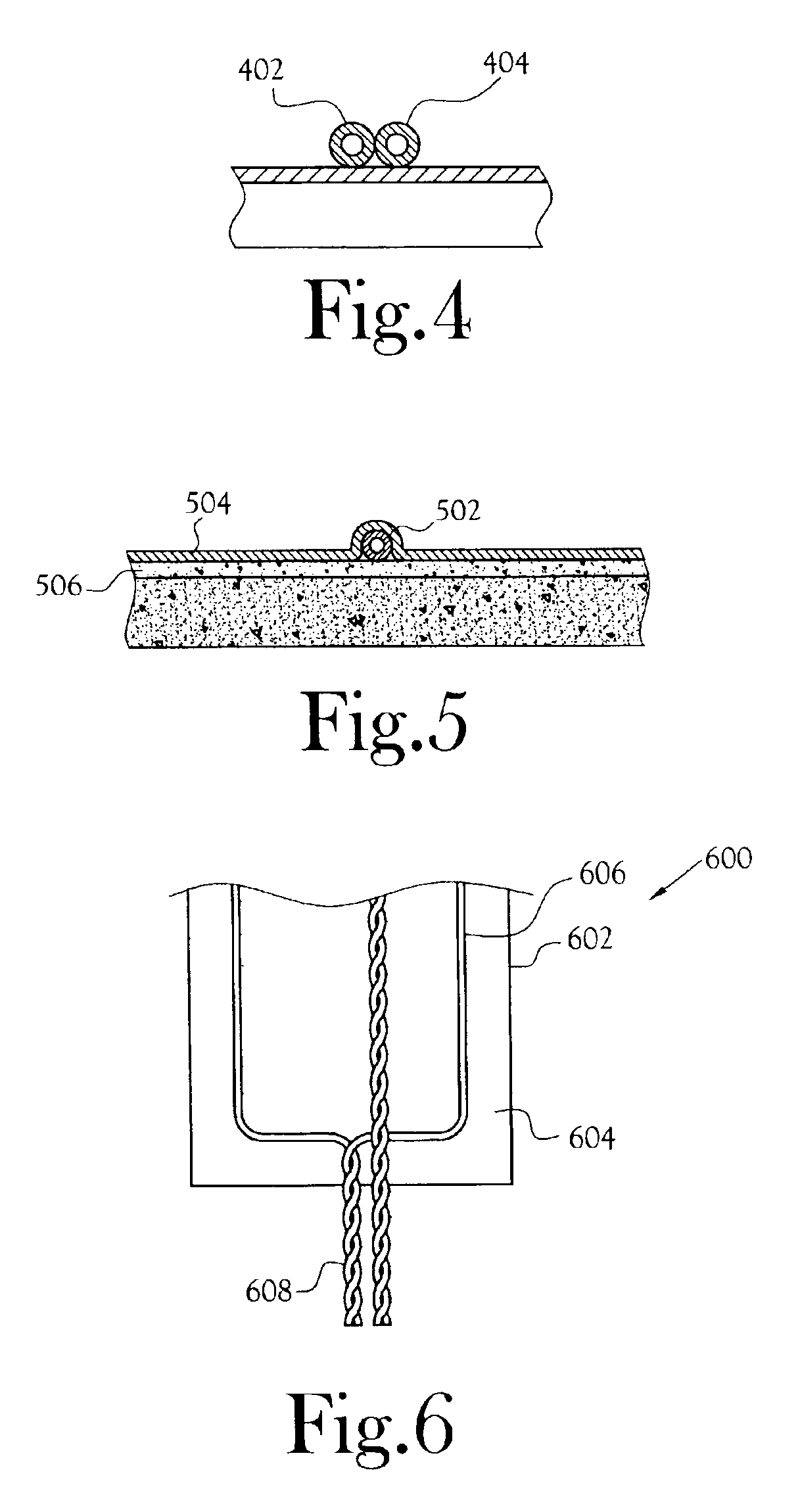Surface-mount traffic sensors
a technology of surface-mounting and traffic sensors, which is applied in the field of vehicle detection, can solve the problems of requiring significant disruption of traffic flow, limiting the ability of radar systems to monitor multi-lane traffic, and exposing staff to unnecessary risks, so as to facilitate the deployment of vehicle sensors and optimize the useful information
- Summary
- Abstract
- Description
- Claims
- Application Information
AI Technical Summary
Benefits of technology
Problems solved by technology
Method used
Image
Examples
Embodiment Construction
[0063]Portable sensors for monitoring traffic data is shown generally in the figures and described herein. The portable sensors are adapted for ease of installation, portability, and reusablility. One embodiment of the present invention utilizes road-tube pressure sensors and another embodiment is based on inductive sensors.
[0064]By obtaining more accurate vehicle data, historical, real-time and predictive traffic flow can be observed. This leads to more efficient use of current roadways, better planning for future roadway expansion, incident detection, and overall safer more cost effective roadway management. By re-identifying vehicles on the roadway passing a plurality of fixed points, a wealth of new traffic data can be obtained. As vehicles pass between two fixed sensor points on the roadway, the travel time of each vehicle between the two points can be calculated providing real-time point-to-point travel time measurement. The vehicle data from these two points provide “sectiona...
PUM
 Login to View More
Login to View More Abstract
Description
Claims
Application Information
 Login to View More
Login to View More - R&D
- Intellectual Property
- Life Sciences
- Materials
- Tech Scout
- Unparalleled Data Quality
- Higher Quality Content
- 60% Fewer Hallucinations
Browse by: Latest US Patents, China's latest patents, Technical Efficacy Thesaurus, Application Domain, Technology Topic, Popular Technical Reports.
© 2025 PatSnap. All rights reserved.Legal|Privacy policy|Modern Slavery Act Transparency Statement|Sitemap|About US| Contact US: help@patsnap.com



